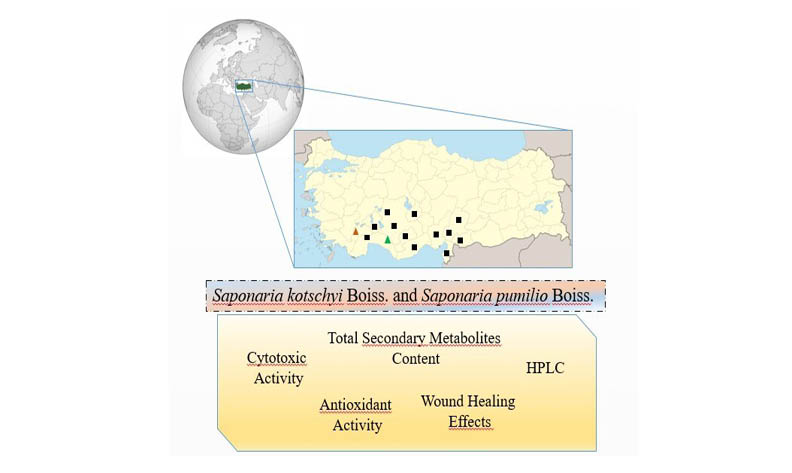Two Unexplored Saponaria Species from Türkiye: Phenolic Composition and a Pharmacologic Potential
DOI:
https://doi.org/10.17344/acsi.2024.9076Abstract
To investigate the total secondary metabolite amounts, phenolic profile, antioxidant activity, acute toxicity, cytotoxic, and wound-healing effects of the aerial parts of Saponaria kotschyi (endemic) and Saponaria pumilio extracts. The total phenolic, flavonoid, saponin, and tannin contents; antioxidant activity (via six different methods, including β-carotene/linoleic acid, DPPH, ABTS, FRAP, phosphomolybdenum, and metal chelating assays); phenolic constituents in the extracts (HPLC method); acute toxicity (brine shrimp lethality test); antiproliferative effects on human cervical carcinoma (HeLa) and human neuroblastoma (SH-SY5Y) cancer cell lines (MTT assay); and the effects on wound healing in healthy mouse fibroblast cells (NIH-3T3) through an in vitro scratch assay were evaluated. The methanol extract of S. kotschyi demonstrated higher concentrations of secondary metabolites and antioxidant activity than S. pumilio. Both species predominantly contained caffeic acid, 2,5-dihydroxybenzoic acid, and epicatechin, though S. pumilio had a notably higher caffeic acid content. Additionally, S. kotschyi extract showed greater cytotoxicity against HeLa and SH-SY5Y cancer cells, while S. pumilio exhibited greater wound-healing efficacy. Two previously unexplored Saponaria species reveal a remarkable richness in secondary metabolites and potent antioxidant activity. Given their diverse phenolic constituents, these species emerge as promising candidates for therapeutic applications in cervical cancer and neuroblastoma, as well as playing a potentially critical role in tissue repair and regeneration—areas that merit further in-depth investigation.

Downloads
Published
Issue
Section
License
Copyright (c) 2025 Cennet Ozay, Nuray Sarac Deveci, Fadime Aydin Kose, Ramazan Mammadov

This work is licensed under a Creative Commons Attribution 4.0 International License.
Except where otherwise noted, articles in this journal are published under the Creative Commons Attribution 4.0 International License
